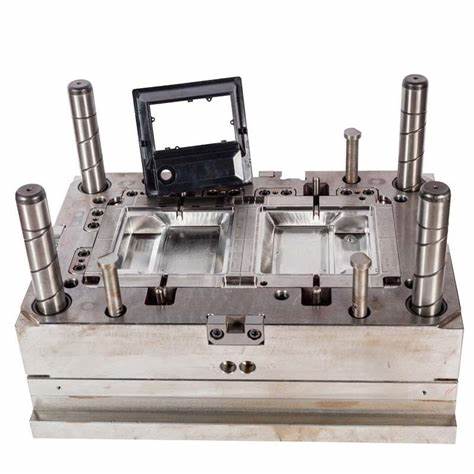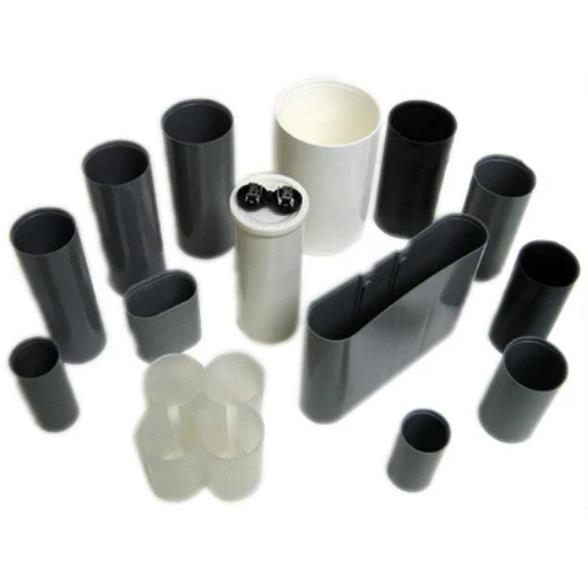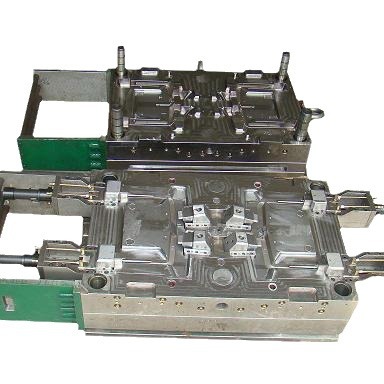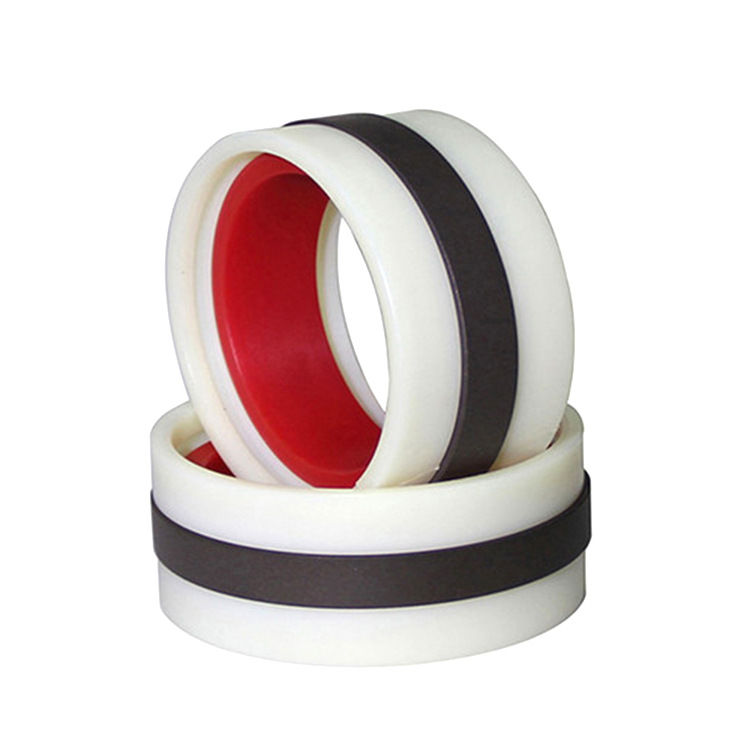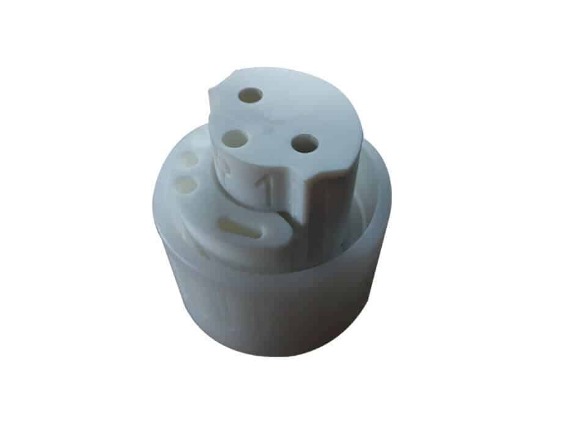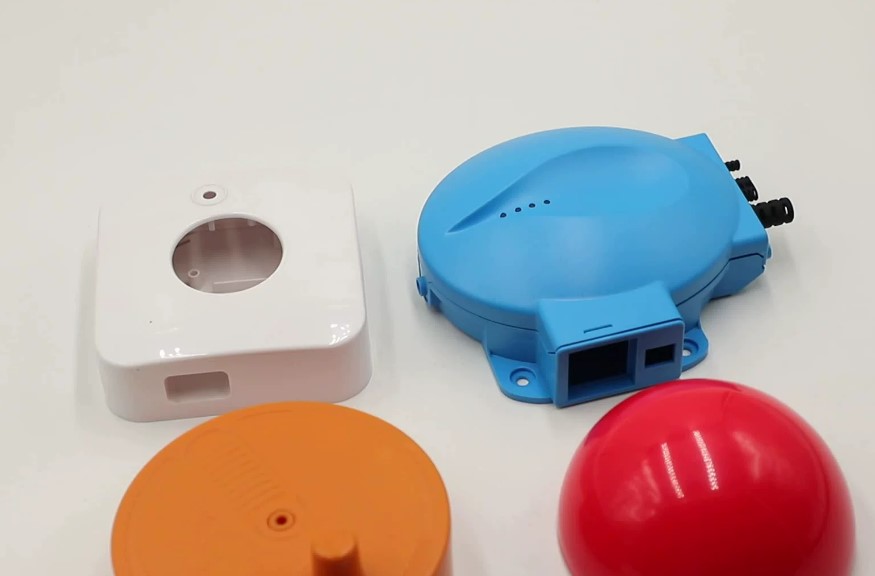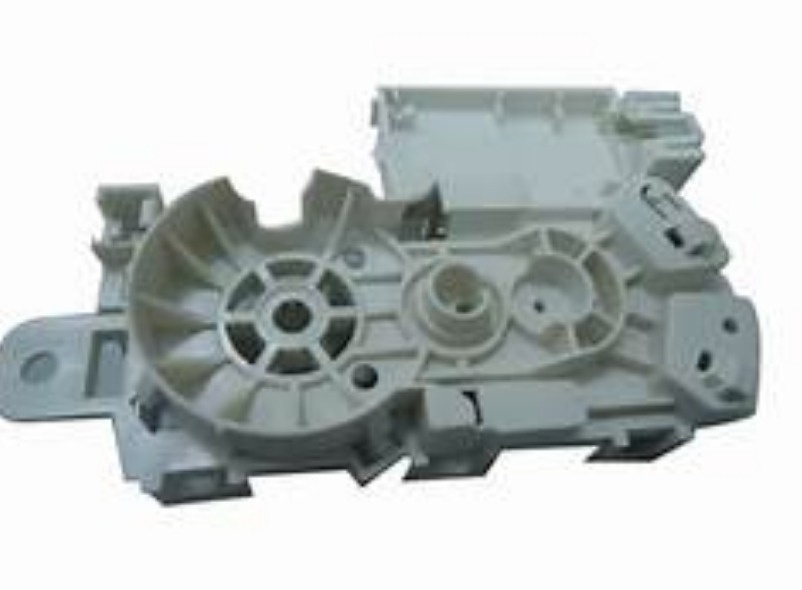What Exactly is Two - Stage Injection Molding?
Two - Stage Injection Molding, also known as two - shot injection molding, is an advanced manufacturing process that has revolutionized the production of complex plastic components. This method involves injecting different materials or different forms of the same material into a mold in two distinct steps.
The First Stage: In the initial stage, the first material is melted and injected into the mold cavity. This material forms the base or a significant part of the final product. For example, when creating a toothbrush with a soft - grip handle, the first stage might involve injecting a rigid plastic for the main body of the toothbrush. This rigid plastic provides the necessary structure and support to the overall product. The mold is designed in such a way that it can hold this first - injected material securely in place for the next stage.
The Second Stage: Once the first material has cooled and solidified to a certain extent, the mold is re - configured (either by rotating, moving parts, or using a multi - cavity setup). Then, the second material is injected. In the case of the toothbrush, the second material could be a soft elastomer that is injected to create the soft - grip area on the handle. This second - stage material bonds with the first - stage material, creating a single, unified product with multiple properties.
The two - stage injection molding process can also be used with the same material but in different colors or with different additives. For instance, in the production of a plastic toy with a colored outer layer and a more durable inner core, the same base plastic can be used. The first stage injects the plastic with the appropriate additives for strength into the mold. In the second stage, the same plastic but with colorants is injected to give the toy an attractive appearance.
The Intricate Process of Two - Stage Injection Molding
Stage 1: Initial Injection
The first stage of two - stage injection molding is the foundation upon which the entire product is built. It begins with the careful selection and preparation of the first material. This material is typically a thermoplastic resin, which comes in pellet form. These pellets are loaded into the hopper of the injection - molding machine.
The machine then heats the material to its melting point, usually in a heated barrel equipped with a screw. As the screw rotates, it not only melts the plastic pellets but also conveys the molten plastic forward. The heat - up process is crucial; if the temperature is too low, the plastic may not flow properly, leading to incomplete filling of the mold. If it's too high, the plastic can degrade, affecting the quality of the final product.
Once the plastic is fully molten and has the right viscosity, it is injected into the mold cavity under high pressure. The mold cavity is designed to shape the first - stage material into the base form of the product. For example, in the production of a complex automotive interior component, the first - stage injection might create the rigid structural framework of the part. This framework will provide the necessary support and stability for the entire component. Precise control of injection pressure, speed, and volume is essential at this stage. If the injection pressure is too low, the mold may not be filled completely, resulting in a defective product. On the other hand, excessive pressure can cause the plastic to flash (escape from the mold along the parting lines), leading to surface defects and the need for additional finishing operations.
Stage 2: Secondary Injection
After the first - stage material has cooled and solidified enough to maintain its shape, the mold undergoes a transformation for the second - stage injection. The mold may be rotated, shifted, or reconfigured in some way to expose the first - stage part to a new set of cavities or injection points.
This is when the second material is introduced. The second material can serve various purposes. In the case of a mobile phone case with a soft - touch outer layer, the first stage might create a hard, impact - resistant plastic shell, and the second stage injects a soft thermoplastic elastomer over the surface of the hard shell. This soft layer not only provides a more comfortable grip but also adds an extra layer of protection against scratches and minor impacts.
Another common application is in the creation of products with embedded components. For instance, in the production of an electronic device housing, the first - stage injection can form the plastic enclosure, and in the second stage, metal inserts (such as threaded inserts for screws) can be placed in the mold, and then plastic is injected around them to firmly embed the inserts in the housing. This ensures that the inserts stay in place during the product's lifespan and can withstand the forces applied during assembly and use.
The bonding between the first - stage and second - stage materials is a critical aspect of the secondary injection process. The two materials need to adhere well to each other to create a single, cohesive product. Specialized materials and mold design features are often employed to enhance this adhesion. For example, surface treatments on the first - stage part, or the use of compatible polymers for both stages, can improve the bond strength. Additionally, the temperature and pressure conditions during the second - stage injection are carefully controlled to ensure proper bonding without damaging the first - stage part.
The Dual - Faceted Advantages and Disadvantages
Advantages that Stand Out
- Complex Shape Manufacturing: One of the most significant advantages of two - stage injection molding is its ability to create products with highly complex geometries. For example, in the production of medical devices, such as inhalers, two - stage injection molding can be used to create a single, integrated unit with a hard plastic body for structural integrity and a soft, ergonomic grip area for ease of use. This eliminates the need for multiple parts and assembly processes, which not only saves time but also reduces the risk of assembly - related defects. In contrast, traditional single - stage injection molding would struggle to produce such a complex shape with multiple material properties in one piece.
- Enhanced Product Performance: By combining different materials in two - stage injection molding, manufacturers can create products with enhanced performance characteristics. For instance, in the automotive industry, a car interior component might be made with a first - stage injection of a heat - resistant and rigid plastic to withstand high - temperature conditions in the engine compartment. The second - stage injection could then add a layer of sound - dampening material. This combination results in a component that not only provides structural support but also helps to reduce noise inside the vehicle, improving the overall driving experience. A study by a leading automotive parts manufacturer found that using two - stage injection molding for such components increased the product's performance by up to 30% in terms of noise reduction compared to single - material components.
- Cost - Effective in the Long Run: Although the initial setup costs for two - stage injection molding can be high, it can lead to long - term cost savings. Since it reduces the need for multiple parts and assembly operations, it cuts down on labor costs associated with assembly. A case study of a consumer electronics company showed that after switching to two - stage injection molding for their product housings, they were able to reduce their assembly - related labor costs by 40%. Additionally, the elimination of multiple parts means fewer potential points of failure, reducing the cost of product recalls and warranty claims.
Disadvantages that Can't be Ignored
- High Mold Costs: The molds used in two - stage injection molding are significantly more complex than those for single - stage injection molding. They need to be designed to accommodate two different injection processes, often with moving parts to re - configure the mold cavity between the two stages. This complexity leads to higher mold manufacturing costs. For example, a simple single - stage injection mold for a basic plastic part might cost around \(5,000, while a two - stage injection mold for a similar - sized but more complex part could cost upwards of \)20,000. These high mold costs can be a significant barrier for small - to - medium - sized enterprises, especially those with limited budgets.
- Complex Equipment Requirements: Two - stage injection molding requires specialized equipment. The injection - molding machines need to be equipped with additional features such as multi - nozzle systems, precise mold - movement mechanisms, and advanced control systems to manage the two - stage process accurately. This not only increases the initial investment in equipment but also the cost of maintenance. The maintenance cost of a two - stage injection - molding machine can be up to 50% higher than that of a standard single - stage machine due to its more complex components and systems.
- Longer Production Cycles: The two - stage injection molding process generally takes longer than single - stage injection molding. After the first - stage injection, the part needs to cool and solidify to a certain extent before the second - stage injection can occur. This additional cooling time, along with the time required to re - configure the mold, adds to the overall production cycle. In some cases, the production cycle for a two - stage injection - molded part can be 2 - 3 times longer than that of a single - stage part, which can impact production efficiency and throughput, especially for high - volume production runs.
Two - Stage Injection Molding in the Real World
Two - stage injection molding has found its way into various industries, revolutionizing the production of a wide range of products. Here are some real - world applications that showcase its versatility and importance.
Automotive Industry
In the automotive sector, two - stage injection molding is used to create high - quality interior components. For example, car dashboard panels often require a combination of materials. The first stage might involve injecting a rigid plastic to form the structural framework of the dashboard. This plastic needs to be strong enough to support various components such as the instrument cluster, air vents, and storage compartments. In the second stage, a soft, scratch - resistant material is injected over the surface. This soft layer not only provides a more comfortable and aesthetically pleasing feel but also helps to reduce noise and vibration within the vehicle.
Another example is the production of car door handles. The first - stage injection creates a strong, inner core made of a durable plastic that can withstand the mechanical stress of repeated use. The second - stage injection adds a soft, rubber - like outer layer. This outer layer improves the grip for the user, making it easier to open and close the car door, especially in wet or cold conditions.
Electronics Industry
The electronics industry has also embraced two - stage injection molding, particularly in the manufacturing of mobile phone cases. A common application is to use a hard plastic in the first stage to create the main body of the phone case. This hard plastic offers protection against impacts and provides a stable structure for the phone. In the second stage, a soft, shock - absorbing material is added around the edges and corners of the case. This soft material can better absorb the energy from drops and bumps, reducing the risk of damage to the phone. Additionally, some phone cases have a second - stage injection of a clear, scratch - resistant material on the back to keep the case looking new for longer.
For electronic devices like smartwatches, two - stage injection molding is used to create the watch body. The first - stage injection forms the rigid housing that contains the electronic components. The second - stage injection can add a soft, skin - friendly material around the wrist - contact area, ensuring comfort during long - term wear.
Medical Industry
In the medical field, two - stage injection molding is crucial for manufacturing complex and high - precision components. For instance, syringe barrels are often made using this process. The first - stage injection creates the main barrel structure from a medical - grade plastic that is strong and transparent for easy visualization of the liquid contents. In the second stage, a soft, non - slip material is added to the outer surface of the barrel. This soft material makes it easier for medical professionals to hold the syringe firmly, especially during delicate procedures.
Another example is the production of inhalers. The first - stage injection forms the hard plastic body of the inhaler, which houses the medication reservoir and the mechanical components for dispensing the medication. The second - stage injection adds a soft, ergonomic grip area. This grip area is designed to be easy to hold for patients, especially those with limited hand strength or dexterity, ensuring accurate and effective use of the inhaler.
Yigu Technology's Professional Insights
As a leading non - standard plastic metal products custom Supplier, Yigu Technology has in - depth insights into Two - Stage Injection Molding. Our advanced mold design capabilities allow us to create highly intricate molds tailored for two - stage injection molding. We use state - of - the - art software for mold flow analysis, ensuring optimal material flow and minimal defects during the two - stage process.
In terms of quality control, we have a rigorous system in place. Every product that goes through our two - stage injection molding process is closely monitored at each stage. From the selection of high - quality raw materials to the final inspection of the finished product, we adhere to strict international quality standards. Our experienced engineers are constantly on - site to adjust parameters and ensure the best possible product quality.
Moreover, Yigu Technology is committed to continuous innovation in two - stage injection molding. We are constantly exploring new materials and process improvements to meet the evolving needs of our clients, whether it's in the automotive, electronics, or medical industries.

